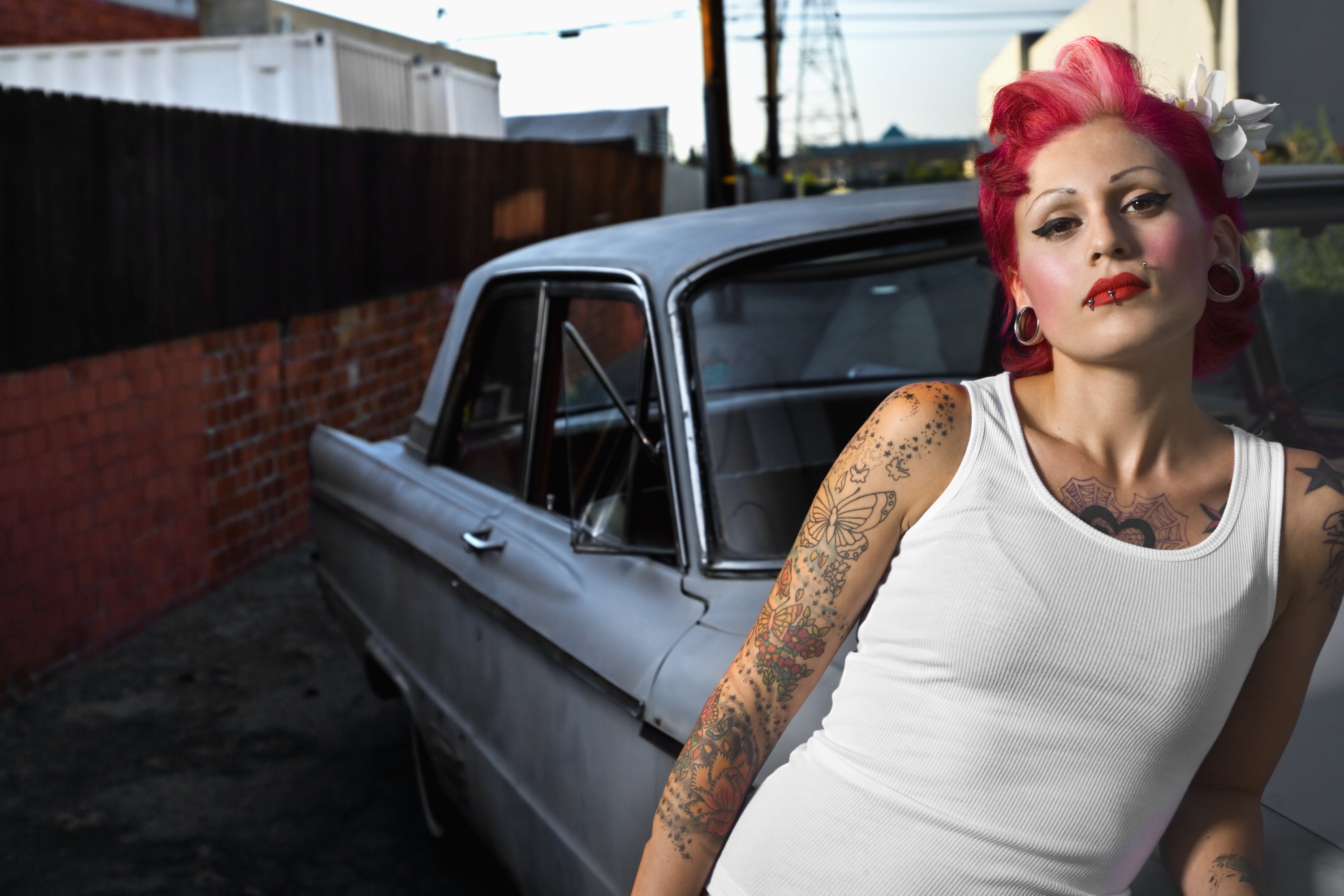It is strongly advisable to research a reputable and safe piercer who is fully licensed as the chances of a piercing going wrong or being rejected are hugely reduced. Some of the most common issues with new piercings are allergic reactions to the jewellery and infection.

Materials
When a piercing is fresh, it is important that the jewellery is fully sterile and hypoallergenic. It is standard procedure to be pierced with implant grade titanium although some piercers may use surgical stainless steel or gold.
Once the piercing is healed there is a lot more freedom in terms of the metals and materials that can be worn. For example, the lobe can take a huge variation in materials, such as brass.
Long-term wear is slightly different and therefore for piercings that are less likely to be frequently changed such as helix or tragus, bioplast or durable metals that don’t tarnish are better.
If a lobe piercing is stretched, organic materials such as bone, horn, coconut, stones and other woods are comfortable for long term wear, as they are breathable.
Jewellery
The jewellery used to heal a piercing is very important, if a ring is used in the wrong place it can move around too much and create scar tissue growth in the form of a keloid, a lump. If a bar is too short and doesn’t allow sufficient swelling after a piercing it will also create issues and may trap excess fluid and infection that cannot drain. This is why it is so important to find a certified piercer in order to avoid these issues from happening.
The gauge a piercing is done with tends to be down to the piercers preference, it is said a thicker gauge is less likely to reject, but obviously it also leaves a larger scar. The area and thickness of the area being pierced also dictates the gauge, a body piercing such as navel will always be a thicker gauge than a facial piercing such as nostril.
Aftercare
Regardless of what piercing you get, aftercare should always be the same and taken very seriously. Good aftercare is just as important as a good piercer in order to avoid issues such as keloids and infection.
Minimal touching of the healing piercing prevents infection and it is super important not to twist the jewellery (no matter how satisfying it feels!) as this keep reopening the wound and therefore greatly slows down healing times.
How to clean ear piercings
The recommended aftercare from any good piercer would be to mix a quarter of teaspoon of sea salt (very important not to use table salt as it is mixed with iodine) with boiled water. Once the solution has cooled enough to be bearable, put it into a cup or shot glass and fully submerge the new piercing for at least five minutes. This is vital as the solution forces any liquid and crust inside your piercing out and into the solution; this is great for the reduction of swelling or infection.
Types of ear piercings

Lobe
Lobe piercings can include any part of the soft lobe tissue. They tend to be pierced with 1.2mm (16g) barbells or labrets.
Healing time is 4-6 weeks.
Tragus
This piercing goes through the piece of cartilage that juts out of the front of the ear; it is usually pierced with a labret or barbell at 1.2mm (16g) gauge.
It usually takes 8-16 weeks to heal.
Anti-tragus
This is the part of the ear opposite to the tragus, a piece of cartilage that is usually pierced with a barbell at 1.2mm (16g) gauge.
Healing time is 8-16weeks.
Conch
This is the cartilage above the lobe and on the inside of the ear. It is usually pierced at 1.6mm (14g) with a barbell.
Healing time is 8-16weeks.
Snug
A piercing of the inner cartilage halfway down the outer rim of the ear. It is usually pierced at 1.2mm (16g) gauge with a barbell.
Healing time is 8-16 weeks.
Industrial
This piercing is two separate holes connected by a single piece of jewelry. It is usually pierced at 1.2mm (16g).
Healing time is 3-12months.
Daith
A piercing between the rook and the ear canal, this is usually pierced with a captive bead hoop at 1.6mm (14g).
Healing time is 8-16 weeks.
Forward helix / helix
This is any piercing on the outer rim of cartilage on the ear. Helix tends to be pierced with a captive bead hoop at 1.2mm (16g) and forward helix is usually pierced with a barbell or labret.
Healing time is 2-12 months.
Rook
This piercing is on the thick fold of cartilage on the inside of the upper ear. It is usually pierced using a barbell or labret at 1.2mm (16g).
How long does it take ear piercings to heal?
Healing time is 2-12 months.


